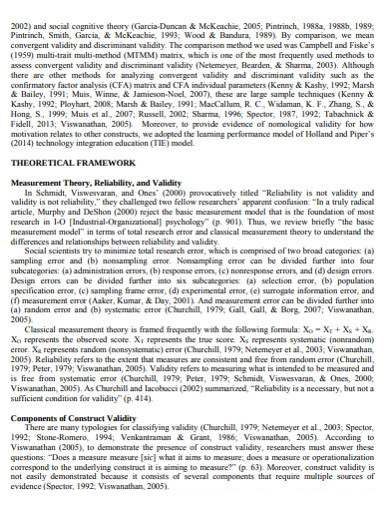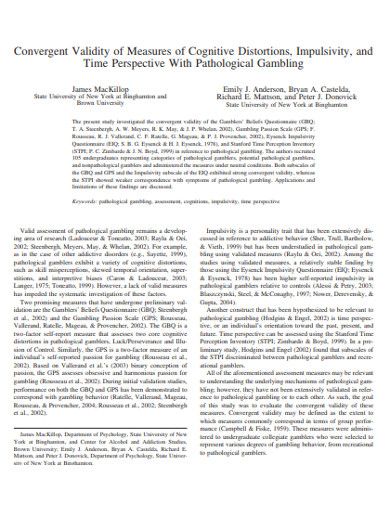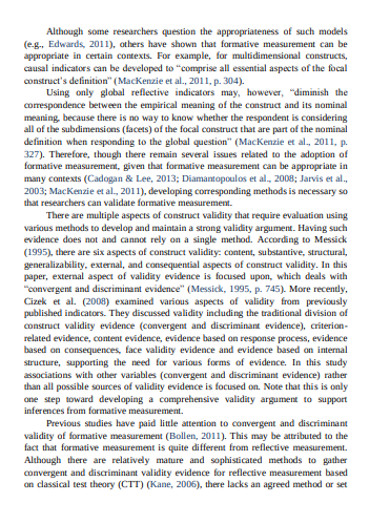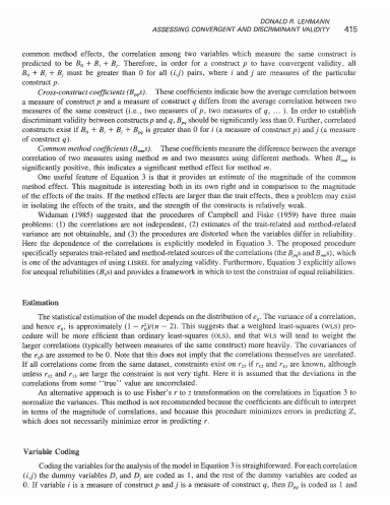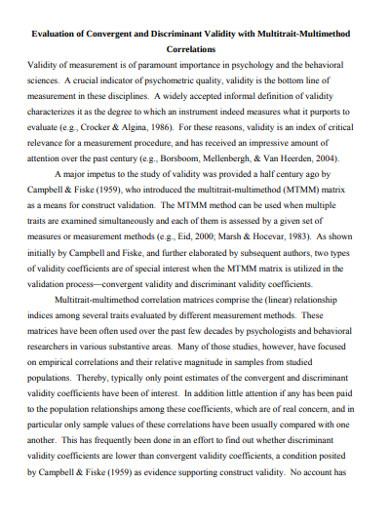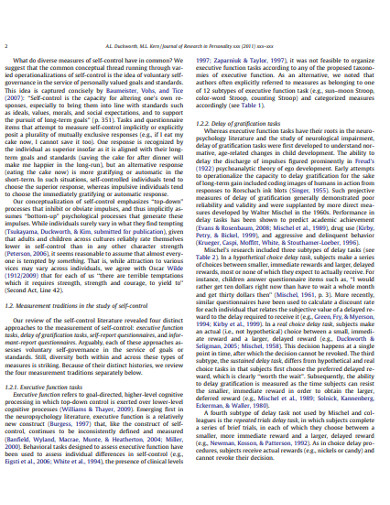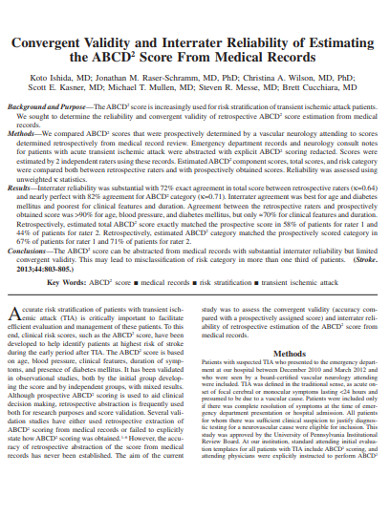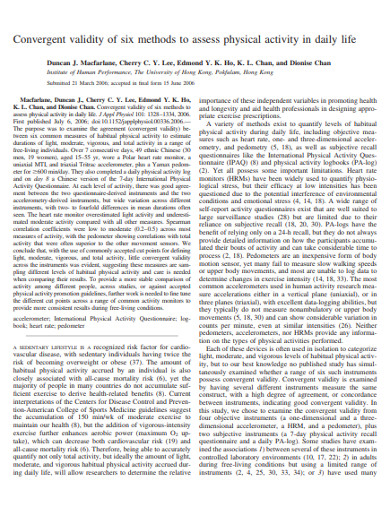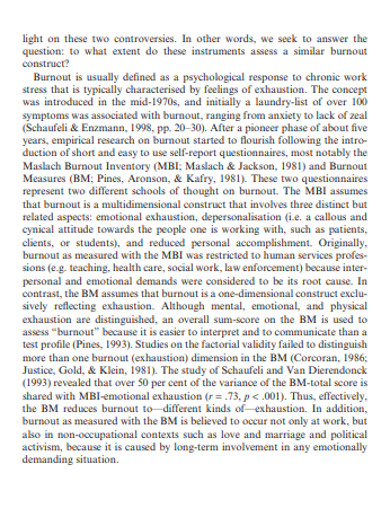10+ Convergent Validity Examples to Download
Sometimes, when something is similar to another, they can meet in the middle. Although they have their differences, you can still point out the obvious likeness. At some point in a specific timeline, a convergence of two phenomena caused the creation of a singularity. That singularity should come only when there is a known relation between two objects. Perhaps a good way to visualize this is through your parents. You and your dad might have the same physical and behavioral traits, but you two are not the same, you don’t share the same life goals. Your relation to one another causes you to share a commonality. Figuring out if there should be a reason for this similarity is called convergent validity.
When it comes to tests and constructs, similarities between related constructs are inevitable. Finding out what these similarities are and seeing if there is a reason they exist is called convergent validity. This type of validity sees to it that project assessments with similar traits are, in fact, related. Proving that there is convergent validity between two or more tests is all about making sure that only those that work in the same area have overlapped. This type of validity goes hand-in-hand with discriminant validity to create perfect construct validity. Convergent validity applies greatly in medicine, education, psychology, and social science.
Construct Validity: Convergent vs. Discriminant
Convergent validity is a subcategory of construct validity. Construct validity’s main idea is that a test used to measure a construct is, in fact, measuring a construct. If it doesn’t show any signs of this validity, it may be measuring something else. To create perfect construct validity, convergent and discriminant (or divergent) validity should be present in your test. Although they work together, there is a key difference between convergent vs. divergent validity. The use of the former is to prove that constructs are closely related, while the latter is sees that unrelated constructs should show no signs of being associated with each other. Once you find the balance between these two, you’ve got yourself construct validity.
10+ Convergent Validity Examples
There are many measurement charts to follow when studying a construct. There are even multiple ways to see how well an instrument measures a construct. An excellent way to see if a test is doing what it should is by seeing if it shows similarities to related assessments. This is the central concept of convergent validity. To help you understand more about this type of validity, here are 10+ convergent validity examples you can check out.
1. Assessing Convergent and Discriminant Validity Example
2. Sample Convergent Validity Example
3. Simple Convergent and Discriminant Validity Example
4. Basic Convergent Validity Example
5. Evaluation of Convergent Validity Example
6. Standard Convergent Validity Example
7. Printable Convergent Validit Example
8. Formal Convergent Validity Example
9. Convergent Studdent Validity Example
10. Convergent Validity Template
11. Professional Convergent Validity Example
Cunning Ways for Convergent Validity
Its reliability and validity that can measure the success of a test. this very important to personality tests and whatnot. If it doesn’t show any signs of both, your assessment is sure to fail. A type of validity that you should look into is a test’s convergent validity. If a test proves that it has a commonality with other tests, that means it has convergent validity. The tests don’t have to follow the same survey methodology; they just have to show identical results when measuring the same constructs. To help you in achieving convergent validity, here are some tips you should look into.
1. Conceptualize
The first thing you need to do is get a firm understanding of the construct you want to measure. You need to be familiar with its characteristics for you to conceptualize the right system and ask the right questions. If you don’t know anything about the construct you are measuring, how will you know if you are getting the appropriate data? Once you get a grasp of the construct, you can then make your research questionnaire.
2. Compare
After creating the skills assessment, you then have someone test it out. Collect the results from your initial run and compare it to other tests. This part is very similar to finding out if a measuring instrument has concurrent validity. If the two examinations have any resemblance in their results, you can prove that there is convergent validity between the two of them. If not, you might need to do some kind of project analysis to find out what went wrong.
3. Differentiate
Along with finding out the things that make them similar, you also need to take note of their differences. Since they measure the same construct, any significant variations can also lead to significant setbacks. It would help if you made a risk management plan to ensure that their differences are only minimal and that they still measure the same construct. It would be another story if they were to measure completely different constructs. Amend those differences and give it another go.
4. Specify
Your assessment should also be sensitive to the tiny details about the construct you are measuring. Any inconsistencies can prove your measurement invalid. You need to make sure all the specifics are taken into account and that your construct can produce comprehensive data analysis and results. You never know, perhaps the convergence you need is all in the details.
The validity of something is visible through its likeness to others. If it follows the norm, maybe it has the right formula. Conformity isn’t always the way to go, but sometimes it’s the only determinant.



